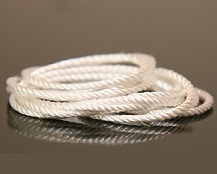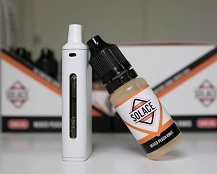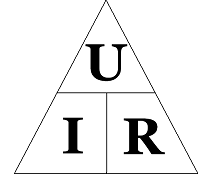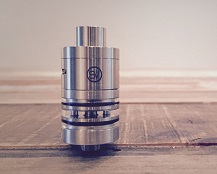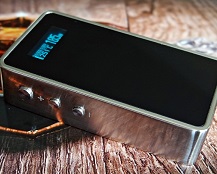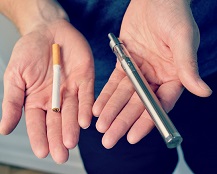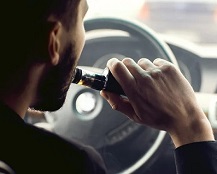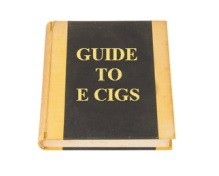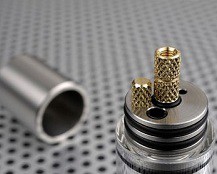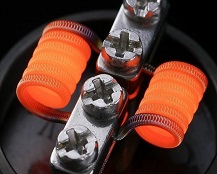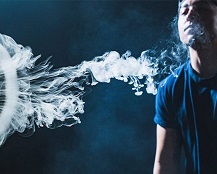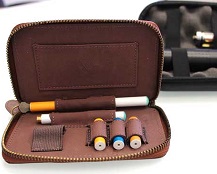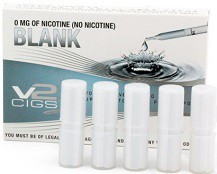Mod not producing vapor? There are many potential causes for this problem, but thankfully most of them are easy to address if you know what you're doing. Here are the main things you should consider.
The myriad potential benefits of electronic cigarettes are leading more and more smokers to make the switch every day. The only problem is that e-cigs are essentially still a brand new technology, and it’s easy to feel out of your depth when you’re first considering the different brands and the various options.
Your wick is the part of your e-cig most likely to contaminate your vapor, so learning about preparation and general wick safety is vital for any rebuilders.
Nicotine salt e-juices are becoming increasingly popular alongside the rise of pod-style vaping devices, but what are they? What are the benefits of nicotine salt e-liquid? What types of device are best to use with it? And are nicotine salt juices right for you?
Cleaning your vape tank can seem like a frustrating chore but if you’re looking for a superior vaping experience, it’s...
Vaping is all about Ohm’s Law. When you move into the realms of APVs, where the atomizer resistance and voltage are both often variable, the weird-looking equations actually pretty much determine how powerful your hit of vapor is.
With a mess of acronyms like RDA, RTA, RBA and RDTA to contend with, even grasping the basics about the types of rebuildable tanks can seem difficult. So here’s a guide to the types of rebuildable tanks to help you get to grips with the options and find your perfect device, with definitions, explanations and pros and cons for each type.
These days you’ll barely ever see a mod released which doesn’t offer temperature control. But what is TC vaping? How does it work? Why would you want to use it? What coils can you use with it? Here’s everything you need to know.
One of the main motivations for switching to vaping is to save money in comparison to smoking. But do you really save money? And if so, how much will you save? What’s the cheapest type of device to use? We’ve taken a look at the numbers to put together this cost comparison for vaping vs. smoking.
Vaping and driving is generally legal, but if you aren't careful about how you vape, it could still land you in trouble or even put you and others at risk. Luckily, if you follow a few simple tips you can stay safe and on the right side of the law.
E-cigarettes are a relatively new technology, and many users are unsure of exactly how an e-cig works. You might have no idea what a cartomizer is, what you would do with e-liquid or even how the e-cigarette makes vapor in the first place. Finding out the answers to the basic questions regarding e-cigs gives you an idea of how the technology works, why it has a reputation of being so safe and why you’re allowed to use them in most non-smoking areas. Welcome to the world of vaping.
There are several factors that collectively shape the lifespan of your atomizer coil. The acidity level and the PG/VG consistency of your e-liquid both play an important role. Additionally, the amount you vape and the amount of power running to the coil are also contributing factors. Taking these factors into account, you can estimate how long a coil will last.
Switching to vaping is a sign that you want to minimize the risks of your nicotine use as much as possible. But are some ways to vape safer than others? Although we can't be 100 % certain, there are a few steps you can take that will probably make vaping even safer.
Rebuildable atomizers are meant for advanced users. As the name suggests, the user must rebuild their wicks on regular basis. There are several types of advanced rebuildable atomizers but we will break it down into 3 common types: tank or genesis style, dripping, and a third type which I like to call the hybrid.
Getting a burnt taste from your vape is one of the foulest things that you can experience as a vaper....
Learn how to safely charge your rechargeable e-cig (cig-alike models), mods, and Advanced Personal Vaporizers to avoid catastrophic explosions or battery failure.
New to vaping? Here are 10 tips to consider on your journey to becoming a vaping veteran.
Stepping into the vaping world can be both intimidating and confusing. Part of the reason is the (undeserving) bad press...
Carry cases do more than look good. You need to know how to protect against the risk of short circuits if you want to carry your e-cig around safely.
For a regular smoker, the concept of refillable electronic cigarettes is really attractive. They consist of a battery, a cartridge (atomizer) and a liquid containing nicotine. However, you need to know all about these devices before you actually use them.



